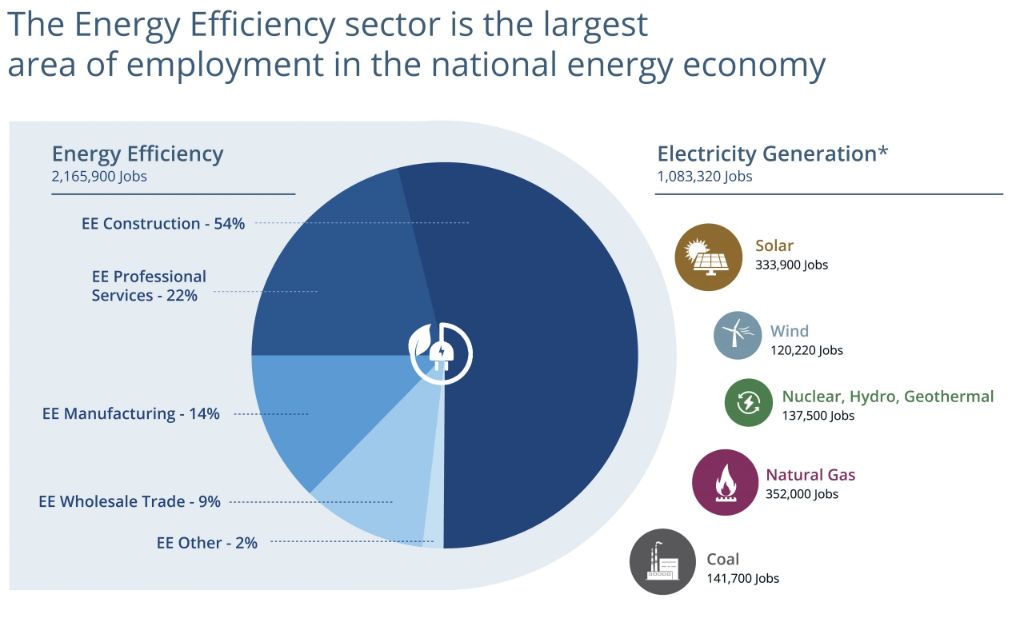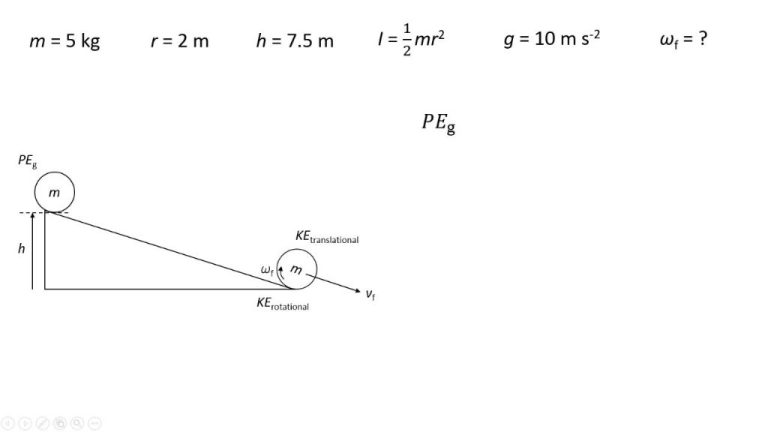What Is The National Energy Efficiency Program?

The National Energy Efficiency Program (NEEP) is a policy initiative in many countries aimed at promoting the efficient use of energy and reducing energy consumption. The program was first established in the early 2000s, with many countries developing national programs during this time.
The main goals of NEEP are to reduce energy intensity, promote energy conservation and efficiency improvements, reduce greenhouse gas emissions, and enhance energy security. Specific targets may vary by country, but common objectives are to reduce energy use in residential, commercial, industrial facilities by upgrading appliances, equipment and building codes over a defined timeframe (UNEP, n.d.).
NEEP utilizes various policy instruments to achieve its goals, including mandatory energy efficiency standards, financial incentives, public awareness campaigns, and energy audits. Government agencies develop and coordinate programs while working with the private sector. Funding comes from a mix of government budgets, fees on energy bills, and international donors (IEA, n.d.).
Overall, NEEP aims to create a comprehensive strategy for unlocking energy efficiency opportunities across all sectors of the economy. By taking a coordinated, long-term approach, countries seek to maximize energy savings and move towards a more sustainable energy future.
History
The National energy efficiency Program (NEEP) was first proposed and established in the early 1990s as part of the National Energy Policy Act of 1992. This Act was passed by Congress and signed into law by President George H.W. Bush. The legislation was driven by concerns over energy security and dependence on foreign oil imports following the 1970s energy crisis and the Gulf War in the early 1990s. The Act established new mandatory energy efficiency standards for consumer and commercial products and created voluntary guidelines and programs aimed at improving energy efficiency across all sectors of the economy.
Specifically, NEEP was authorized under Title V, Subtitle E of the Act. The program was tasked with “supporting research and development of new energy-efficient technologies, helping create voluntary guidelines for energy-efficient products and buildings, and providing education and training programs to promote energy conservation.” Initial funding and oversight of NEEP was provided by the Department of Energy.
Since its inception, NEEP has been periodically expanded and strengthened through subsequent legislation including the Energy Policy Acts of 2005 and 2007 which extended and increased funding for the program. Additional efficiency standards and targets were established as part of broader federal efforts to promote energy independence, reduce energy costs, and combat climate change.
Funding
The National Energy Efficiency Program is funded through a combination of government funding, loans from development banks, and private sector investments. Initial funding for the program came from a €20 million grant from the European Union under the EU-Africa Infrastructure Trust Fund in 2011. This grant helped launch the program and provided financing for the initial energy audits of companies participating in the program.
In 2013, the World Bank approved a $100 million loan to support the implementation of the National Energy Efficiency Program over a 5 year period from 2013-2018 (World Bank, 2013). This loan helped finance investments in industrial energy efficiency measures by companies participating in the program. An additional $110 million in funding was approved by the World Bank in 2018 to continue supporting the program from 2019-2024.
Besides government and World Bank funding, the program incentivizes companies to co-invest in energy efficiency upgrades, with companies expected to finance around 30-40% of project costs. By encouraging private sector investments, the program aims to catalyze sustainable financing models for energy efficiency in Vietnam.
Organizational Structure
The National Energy Efficiency Program is administered by the Bureau of Energy Efficiency (BEE), which operates under the Ministry of Power in the Government of India. BEE was established in 2002 to facilitate the implementation of the Energy Conservation Act, 2001. As the main government agency responsible for reducing energy intensity in India, BEE coordinates the National Energy Efficiency Program along with designated consumers, state designated agencies, and other organizations.
To oversee the program, BEE established the Energy Efficiency Services Limited (EESL) in 2009 as a joint venture of four public sector undertakings: NTPC Limited, Power Finance Corporation, Rural Electrification Corporation and POWERGRID. EESL functions as an implementation agency for the National Energy Efficiency Program, working in consultation with BEE to design, develop, manage and implement energy efficiency projects and programs.
BEE also partners with state designated agencies (SDAs) to promote energy efficiency at the state level through awareness campaigns, capacity building, and implementing projects suited for each state’s needs. SDAs include organizations like the Maharashtra Energy Development Agency, the Kerala State Nodal Agency, and the Rajasthan Renewable Energy Corporation Ltd. Overall, BEE provides the framework and oversight for the National Energy Efficiency Program while collaborating with EESL, SDAs, and other stakeholders to execute various initiatives under the program.
Programs
The National Energy Efficiency Program has rolled out several major initiatives focused on improving energy efficiency across key sectors. Some of the main focus areas include:
- Buildings – The Buildings Energy Conservation Programme aims to accelerate the adoption of energy efficient technologies and practices in new commercial buildings as well as existing ones due for retrofits. Some initiatives include the Energy Conservation Building Code, star rating program for buildings, and retrofit projects for government buildings (https://www.iea-4e.org/projects/eesl-achievements-reports/).
- Industry – The Perform, Achieve and Trade scheme creates a market-based framework for trading energy savings certificates to incentivize industries to adopt more efficient technologies and processes. Other programs offer concessional financing for energy audits and efficiency upgrades (https://www.gov.il/en/departments/news/energy_2030).
- Municipalities – The Efficient and Green Buildings Program aims to improve efficiency of street lighting, water pumping, sewage treatment plants and other municipal infrastructure. Many municipalities have deployed LED street lighting under this initiative (https://innovacion-participativa.org/wp-content/uploads/2019/03/Building-Chiles-national-Energy-Efficiency-program.-An-innovative-experience-in-participatory-public-policy.pdf).
Other major programs focus on efficient lighting, appliances, transport, training and certification of professionals, and consumer awareness campaigns.
Results
The Department of Energy has reported several key accomplishments from the National Energy Efficiency Program over the years. According to the DOE’s Better Buildings Neighborhood Program, the initiative has upgraded over 100,000 residential and commercial buildings to improve energy efficiency (https://www.energy.gov/eere/better-buildings-neighborhood-program/accomplishments). The Energy Efficiency Standards and Labeling program conducted by the International Energy Agency found additional achievements, with EESL programs leading to electricity savings of 346 TWh in 2020 (https://www.iea-4e.org/projects/eesl-achievements-reports/).
In terms of environmental impact, the DOE estimates the Neighborhood Program has saved nearly 3 trillion BTU of energy annually. It has also led to CO2 emission reductions of nearly 3 million metric tons per year. Overall, the national program has increased energy productivity across the building sector and helped position the U.S. as an international leader in energy efficiency. While exact energy savings can be hard to quantify, the initiatives have demonstrably reduced energy consumption and costs over time.
Criticisms
While the National Energy Efficiency Program has had many successes, it also faces some criticisms and limitations.
One area that has drawn criticism is the program’s focus on wealthy households over low-income households. A 2016 review found that low-income efficiency programs remain underfunded and overlooked compared to programs that benefit higher-income households (https://www.aceee.org/sites/default/files/critiques-ee-0416.pdf). More work is needed to ensure energy efficiency upgrades are accessible and affordable for low-income families.
Another critique is that some upgrades, like weatherization, are not always cost-effective. A 2015 working paper suggested the Weatherization Assistance Program does not yield enough energy savings to justify its costs (https://www.energy.gov/eere/articles/getting-it-right-weatherization-and-energy-efficiency-are-good-investments). However, the Department of Energy disputed these findings, arguing that weatherization still provides valuable energy savings and is a wise investment.
Additionally, some argue there are too many overlapping programs and bureaucratic inefficiencies. A 2023 study found the program’s complexity makes it hard to fully assess and optimize its energy savings impact (https://www.mdpi.com/1996-1073/16/13/5170). Streamlining and better coordination between different agencies and program branches could improve efficacy.
While not without valid criticisms, the National Energy Efficiency Program continues working to expand access, refine cost-effectiveness, and maximize energy savings across all communities and households.
Future Outlook
The National Energy Efficiency Program has ambitious plans for expansion and growth in the coming years. According to the National Action Plan for Energy Efficiency Vision for 2025, the program aims to achieve all cost-effective energy efficiency by 2025 through new policies, programs, partnerships, and technologies (EPA).
Some of the key goals outlined for the future include: doubling annual energy efficiency savings compared to 2015 levels, making energy efficiency programs available to all consumers and businesses, implementing advanced metering infrastructure and data analytics to drive efficiency, promoting innovative financing solutions, updating building energy codes regularly, expanding combined heat and power systems, accelerating efficiency in manufactured housing, and developing more efficient appliances, lighting, windows, and building materials (EPA).
The program also aims to expand partnerships with utilities, corporations, retailers, manufacturers, state/local governments, and other stakeholders to increase promotion and adoption of energy efficient technologies and practices. More research and development funding will support next-generation efficiency solutions. With sustained leadership, strategic investments, and stakeholder engagement, the program hopes to realize its vision of affordable, reliable energy for all through efficiency.
Case Studies
The National Energy Efficiency Program has funded many successful projects that demonstrate the impact and benefits of energy efficiency. Here are some notable examples:
The government of Colombia launched a loan program in 1995 as part of the national energy efficiency program to retrofit public outdoor lighting. This project successfully upgraded over 1.3 million streetlights to high efficiency models, reducing energy use by over 50% (source).
In Thailand, the national energy efficiency program supported the replacement of over 1 million older inefficient refrigerators and air conditioners through a rebate program. Households adopting the new energy efficient models saw electricity savings of 200-400 kWh/year (source).
The government of Tunisia worked with the national energy efficiency program to upgrade all public street lighting to efficient models across the country. This improved lighting quality while reducing national electricity consumption by over 60 GWh per year (source).
These examples showcase the real-world energy and cost savings that can be achieved through the national energy efficiency program’s initiatives and funding for impactful projects.
Conclusion
In summary, the National Energy Efficiency Program is a key initiative that has significantly impacted energy efficiency and conservation in the United States. Through its various programs targeting the residential, commercial, industrial, and transportation sectors, it has helped drive adoption of energy efficient technologies and behaviors. According to an analysis by the International Energy Agency, the program is estimated to have saved over 1 quadrillion BTUs of energy since its inception, reducing energy consumption across sectors by up to 35%
The importance and success of the program highlight the vital role that government policy and initiatives can play in advancing energy efficiency goals nationwide. As the urgency of climate change and energy dependence grows, programs like this will become even more crucial. There is still room for expansion and improvement of the National Energy Efficiency Program to maximize its impact going forward.
In conclusion, all stakeholders – from policymakers to businesses to individual citizens – must recognize the value of and continue supporting national efforts to enhance energy efficiency. We all have a part to play in driving progress and change. The time is now to build on the momentum of this program, implementing its lessons learned to achieve even greater energy savings and emissions reductions in the future.




